Mitochondrial Structure and Bioenergetics in Normal and Disease Conditions
- PMID: 33435522
- PMCID: PMC7827222
- DOI: 10.3390/ijms22020586
Mitochondrial Structure and Bioenergetics in Normal and Disease Conditions
Abstract
Mitochondria are ubiquitous intracellular organelles found in almost all eukaryotes and involved in various aspects of cellular life, with a primary role in energy production. The interest in this organelle has grown stronger with the discovery of their link to various pathologies, including cancer, aging and neurodegenerative diseases. Indeed, dysfunctional mitochondria cannot provide the required energy to tissues with a high-energy demand, such as heart, brain and muscles, leading to a large spectrum of clinical phenotypes. Mitochondrial defects are at the origin of a group of clinically heterogeneous pathologies, called mitochondrial diseases, with an incidence of 1 in 5000 live births. Primary mitochondrial diseases are associated with genetic mutations both in nuclear and mitochondrial DNA (mtDNA), affecting genes involved in every aspect of the organelle function. As a consequence, it is difficult to find a common cause for mitochondrial diseases and, subsequently, to offer a precise clinical definition of the pathology. Moreover, the complexity of this condition makes it challenging to identify possible therapies or drug targets.
Keywords: ATP production; biogenesis of the respiratory chain; mi-tochondrial electrochemical gradient; mitochondrial disease; mitochondrial potential; mitochondrial proton pumping; mitochondrial respiratory chain; oxidative phosphorylation; respiratory complex; respiratory supercomplex.
Conflict of interest statement
The authors declare no conflict of interest.
Figures

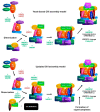
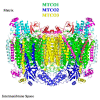
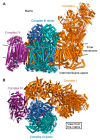
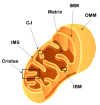





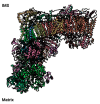
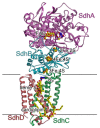
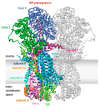
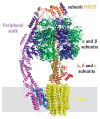
Similar articles
-
Mitochondrial Protein Network: From Biogenesis to Bioenergetics in Health and Disease.Int J Mol Sci. 2020 Dec 22;22(1):1. doi: 10.3390/ijms22010001. Int J Mol Sci. 2020. PMID: 33374898 Free PMC article.
-
Mitochondrial biogenesis: pharmacological approaches.Curr Pharm Des. 2014;20(35):5507-9. doi: 10.2174/138161282035140911142118. Curr Pharm Des. 2014. PMID: 24606795
-
Significance of Mitochondria DNA Mutations in Diseases.Adv Exp Med Biol. 2017;1038:219-230. doi: 10.1007/978-981-10-6674-0_15. Adv Exp Med Biol. 2017. PMID: 29178079 Review.
-
Mitochondrial DNA mutations in disease and aging.Environ Mol Mutagen. 2010 Jun;51(5):440-50. doi: 10.1002/em.20586. Environ Mol Mutagen. 2010. PMID: 20544884 Review.
-
Neurodegeneration as a consequence of failed mitochondrial maintenance.Acta Neuropathol. 2012 Feb;123(2):157-71. doi: 10.1007/s00401-011-0921-0. Epub 2011 Dec 7. Acta Neuropathol. 2012. PMID: 22143516 Review.
Cited by
-
Crosstalk between Dysfunctional Mitochondria and Proinflammatory Responses during Viral Infections.Int J Mol Sci. 2024 Aug 24;25(17):9206. doi: 10.3390/ijms25179206. Int J Mol Sci. 2024. PMID: 39273156 Free PMC article. Review.
-
Emerging Promise of Therapeutic Approaches Targeting Mitochondria in Neurodegenerative Disorders.Curr Neuropharmacol. 2023;21(5):1081-1099. doi: 10.2174/1570159X21666230316150559. Curr Neuropharmacol. 2023. PMID: 36927428 Free PMC article. Review.
-
Neuroprotective Effects of Pharmacological Hypothermia on Hyperglycolysis and Gluconeogenesis in Rats after Ischemic Stroke.Biomolecules. 2022 Jun 19;12(6):851. doi: 10.3390/biom12060851. Biomolecules. 2022. PMID: 35740974 Free PMC article.
-
Mitochondrial DNA Is a Vital Driving Force in Ischemia-Reperfusion Injury in Cardiovascular Diseases.Oxid Med Cell Longev. 2022 May 17;2022:6235747. doi: 10.1155/2022/6235747. eCollection 2022. Oxid Med Cell Longev. 2022. PMID: 35620580 Free PMC article. Review.
-
Ovarian carcinoma immunoreactive antigen-like protein 2 (OCIAD2) is a novel complex III-specific assembly factor in mitochondria.Mol Biol Cell. 2022 Apr 1;33(4):ar29. doi: 10.1091/mbc.E21-03-0143. Epub 2022 Jan 26. Mol Biol Cell. 2022. PMID: 35080992 Free PMC article.
References
-
- Margulis L. Origin of Eukaryotic Cells: Evidence and Research Implications for a Theory of the Origin and Evolution of Microbial, Plant, and Animal Cells on the Precambrian Earth. Yale University Press; London, UK: 1970.
Publication types
MeSH terms
Substances
Grants and funding
LinkOut - more resources
Full Text Sources
Other Literature Sources
Medical
Research Materials

